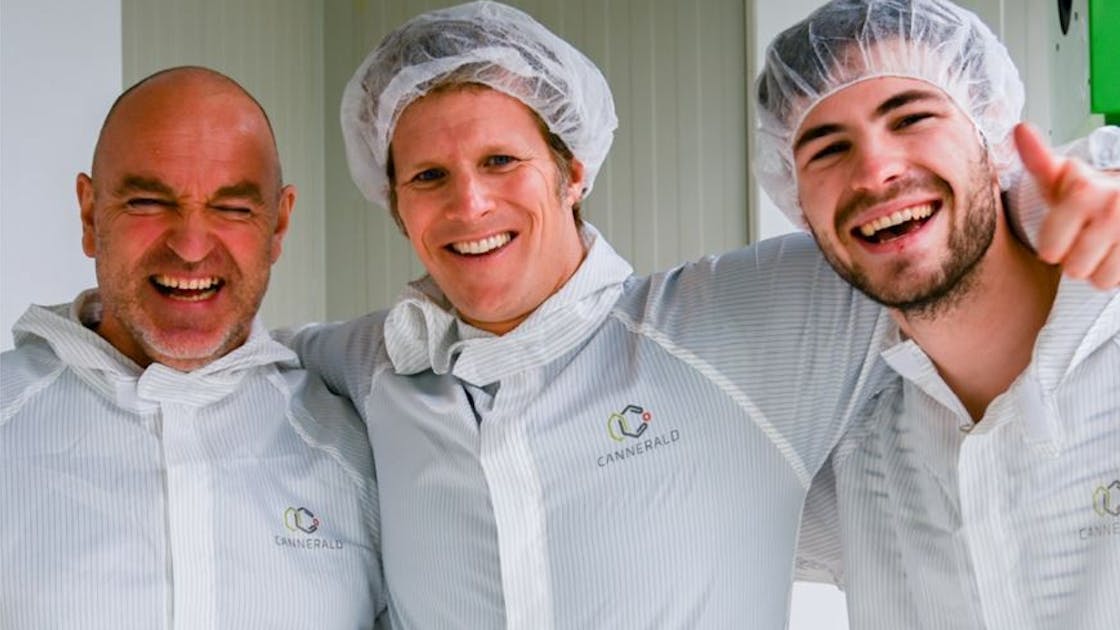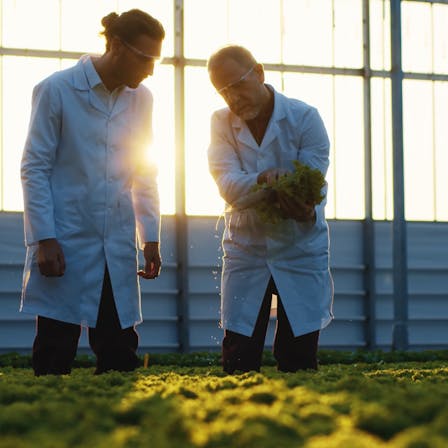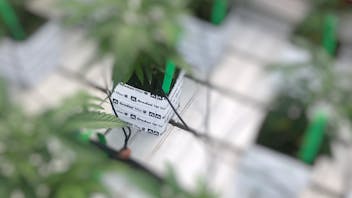Saving on labour and water
The cuttings and new clones first spend an average of two weeks in the propagation room, where Cannerald uses Grodan Max plugs. “We’ve tried lots of different plugs, because it’s difficult to get cloning to perfection in stonewool. But once you get the hang of it, Grodan stonewool is the way to go for me,” states Amweg. “In normal plugs, the clones dry out and you have to re-water them after eight days or so. But the new Grodan Max plugs hold on to so much water that 50% WC is enough, and sometimes even less, to last right through until the clones are transferred to the big cubes.” He experiences a similar benefit with the Grodan Max cubes which he has been trying out in the testing room. That’s where the small-scale experimental work is done to see which strains are suitable for large-scale production: “Normally you have to water the cuttings a week after putting them into the cube to prevent the sides drying out; there will always be some dry spots even if you think you’ve soaked them perfectly. But in the Grodan Max cubes there are no dry pockets at all, which means you have to water them less often. So that’s a big saving for us in terms of both labour and water consumption.”

Even spread of roots
Since progressing from coco, Amweg has tried all kinds of stonewool blocks over the years: “I’ve seen how bad the cheaper ones can be for your plants if they’re not made from the right material. When I discovered Grodan’s Delta cube, that’s when things got interesting for me. I did a lot with that, so I was immediately curious when I heard about the new Max products.” With the flowering cycle almost completed, the company is now approaching the end of the test phase. “It’s common for some strains to suffer from root rot in the vegetative and early flowering phase if the roots are too wet. I tested the Grodan Max cube with three different strains, each with different levels of moisture tolerance, and I saw no root rot at all. That’s probably due to the more even spread of roots. I saw roots coming out of the bottom of the cubes after just a week and they were all the way across too – even in the corners rather than just at the sides. And I mean very big, strong, white roots, not flimsy ones, so I was really impressed!”

“The uniform water content makes it easier to steer the block in the vegetative and flowering phase too,” he continues. “As soon as the roots have penetrated the cube, we drip-irrigate between 8 and 12 times a day. I’ve noticed that the Grodan Max not only holds on to water very well, but as soon as it reaches saturation point it flushes it out much more easily too, which gives you much better control over the EC and pH values, which for Special Crops should ideally be 5.5 to 6.5.”
Baseline settings
For the past few months, Cannerald has been working with Grodan’s GroSens system. “We were looking for a very precise measuring device for the blocks that really tells you what’s going on inside. Even if the plants look good and everything is growing well, I still want to understand why it’s going so well as the basis for protocols. That way, if you ever have a problem, such as yellow leaves, too high EC or low water content, you know what the optimum baseline settings are. And Grodan has helped us with that – mainly by email and WhatsApp during the pandemic, but we hope to meet up in real life before too long,” explains Amweg. “Most of the other devices we tested weren’t actually that accurate, but with GroSens I get the exact same readings I would normally get from run-off tests. So we’re really happy with how it works, it saves a ton of time with regular run-off work. We currently have the handheld version, with three sensors which we move to different rooms based on what we want to measure, but in the future – especially when we add the new rooms – I can imagine us having maybe ten sensors installed permanently per room to get a really clear picture.”
Need for uniformity
“When you’re producing plants on a large scale and in a high-tech facility like we are, you need uniformity for the room to work properly. Ideally, every plant should have the exact same height and stature to create a beautiful sea of green canopy. That uniformity is the result of the root distribution and better water retention… it all adds up,” concludes Amweg. “If the plant is given a strong start, the crop will do much better in the end, with more resistance and ultimately a higher yield. So that’s the biggest reason for us to use the Grodan Max. We’re actually so happy with its performance that we decided to refill a whole flowering room with 1,280 new Pro cubes in mid-June.”









